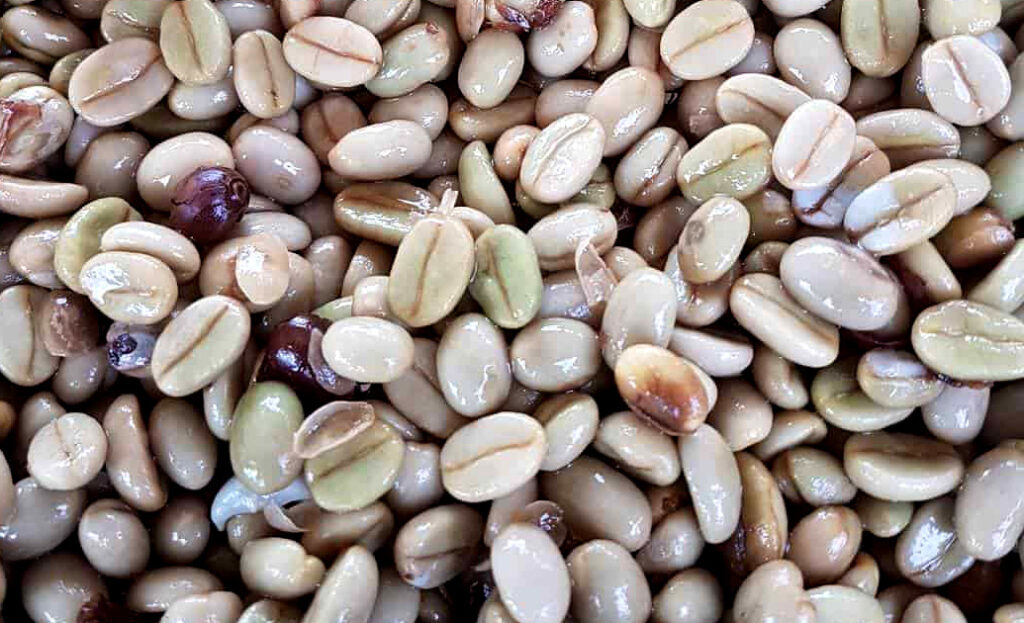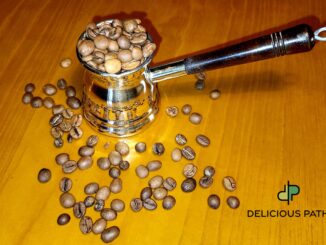
The wet processing of coffee, also known as the washed coffee method, is one of the most widely used and refined ways of preparing coffee beans after harvest.
This process emphasizes clean, bright, and complex flavor profiles, making it the preferred method for many high-quality Arabica coffees worldwide.
Let’s explore how this fascinating process works and why it produces such exceptional coffee.
🌱 What Is Wet Processing in Coffee?
The wet processing method involves removing the coffee cherry’s outer skin and pulp using water before the beans are dried.
Unlike the dry (natural) process — where the entire cherry is sun-dried — the wet method separates the fruit layers first, creating a cleaner, crisper cup with high clarity and vibrant acidity.
This method is especially common in Central and South America, East Africa, and Asia’s high-altitude regions, where water resources and cooler climates support careful fermentation and washing.
🔁 The Steps of Wet Coffee Processing
The process includes several key stages, each affecting the final flavor and quality of the coffee.
1. Harvesting and Sorting
Only ripe coffee cherries are selected, as they yield the best balance of sweetness and acidity.
After picking, cherries are sorted to remove unripe or defective ones using water flotation — ripe cherries sink, while underripe ones float.
2. Pulping
The outer skin (exocarp) of the cherry is mechanically removed using a pulping machine.
This exposes the sticky mucilage layer, which still surrounds the beans and contains sugars crucial for fermentation.
3. Fermentation
The pulped beans are placed in fermentation tanks filled with water for 12–48 hours, depending on altitude, temperature, and desired flavor.
During this stage, natural enzymes break down the mucilage, freeing the beans from sticky residue.
Proper fermentation enhances the coffee’s brightness and aroma, while over-fermentation can lead to sour or unpleasant notes.
4. Washing
Once fermentation is complete, the beans are thoroughly washed with clean water to remove all remaining mucilage.
This step is essential to achieving the “clean cup” profile that defines wet-processed coffees.
5. Drying
The washed beans (now called parchment coffee) are spread out on raised drying beds or patios and dried under the sun until they reach 10–12% moisture content.
Alternatively, mechanical dryers may be used in humid climates.
Proper drying ensures the coffee’s longevity and prevents mold or flavor defects.
6. Hulling and Storage
Once fully dried, the parchment layer is removed during hulling, revealing the green coffee beans.
These are then graded, bagged, and stored under cool, dry conditions before export or roasting.
☕ Flavor Characteristics of Wet-Processed Coffee
Coffees processed using the wet method are celebrated for their clarity, acidity, and brightness.
Because the fruit pulp is removed early, the bean’s intrinsic flavors shine through clearly.
Typical flavor notes include:
- Clean and crisp taste
- Bright acidity (citrus, apple, or berry)
- Floral or tea-like aroma
- Light to medium body
- Balanced sweetness
Wet-processed coffees often exhibit refined, elegant profiles, making them ideal for single-origin or specialty coffees.
🌍 Regions Known for Wet-Processed Coffees
| Region | Typical Flavor Profile | Famous Origins |
|---|---|---|
| Ethiopia (Washed) | Floral, citrusy, tea-like | Yirgacheffe, Sidamo |
| Colombia | Sweet, balanced, nutty | Huila, Nariño |
| Kenya | Bright, juicy, complex | Nyeri, Kirinyaga |
| Central America | Clean, caramel, tropical | Costa Rica, Guatemala, Honduras |
These regions use wet processing to highlight the distinct terroir and elegance of their Arabica beans.
⚖️ Wet vs. Dry Coffee Processing
| Feature | Wet (Washed) Process | Dry (Natural) Process |
|---|---|---|
| Use of Water | High | Low |
| Flavor | Clean, bright, refined | Sweet, fruity, heavy |
| Acidity | High | Low-medium |
| Body | Light to medium | Full, syrupy |
| Processing Time | Shorter, more controlled | Longer, weather-dependent |
| Risk of Defects | Low (if managed properly) | Higher (depends on drying conditions) |
While wet processing delivers clarity and brightness, the dry method produces richer, fruitier coffees — each appealing to different palates.
💧 Advantages of Wet Processing
✅ Cleaner, brighter, and more consistent flavor
✅ Better control over fermentation and quality
✅ Preferred for premium Arabica coffees
✅ Highlights origin and varietal characteristics
⚠️ Disadvantages of Wet Processing
❌ Requires large amounts of clean water
❌ More labor-intensive and costly
❌ Risk of improper fermentation if not monitored
❤️ Final Thoughts
The wet processing of coffee is both an art and a science — a balance of timing, water management, and careful fermentation.
It’s the method behind many of the world’s most vibrant and elegant coffees, celebrated for their clean taste and aromatic complexity.
Whether you prefer the lively brightness of a Kenyan washed coffee or the refined sweetness of a Colombian, the wet process ensures every cup is pure, balanced, and beautifully expressive.
DeliciousPath: Enjoyment in Every Moment
Explore the Gourmet on Board category for exquisite flavors that elevate your meals, even when you’re on a boat, and the Coffee category for aromatic coffee blends that make every moment special. DeliciousPath is here to turn every experience into something unforgettable!

























